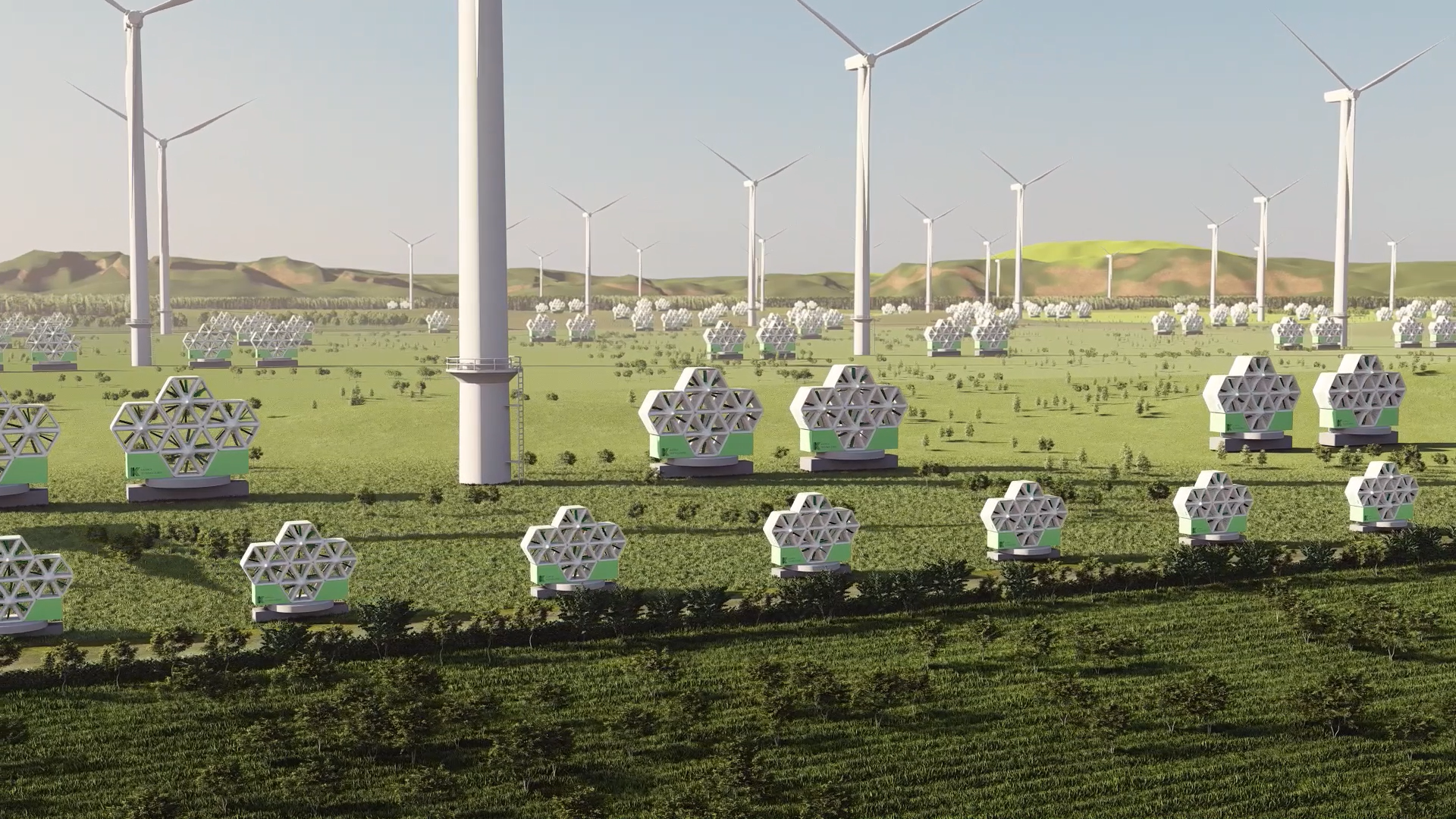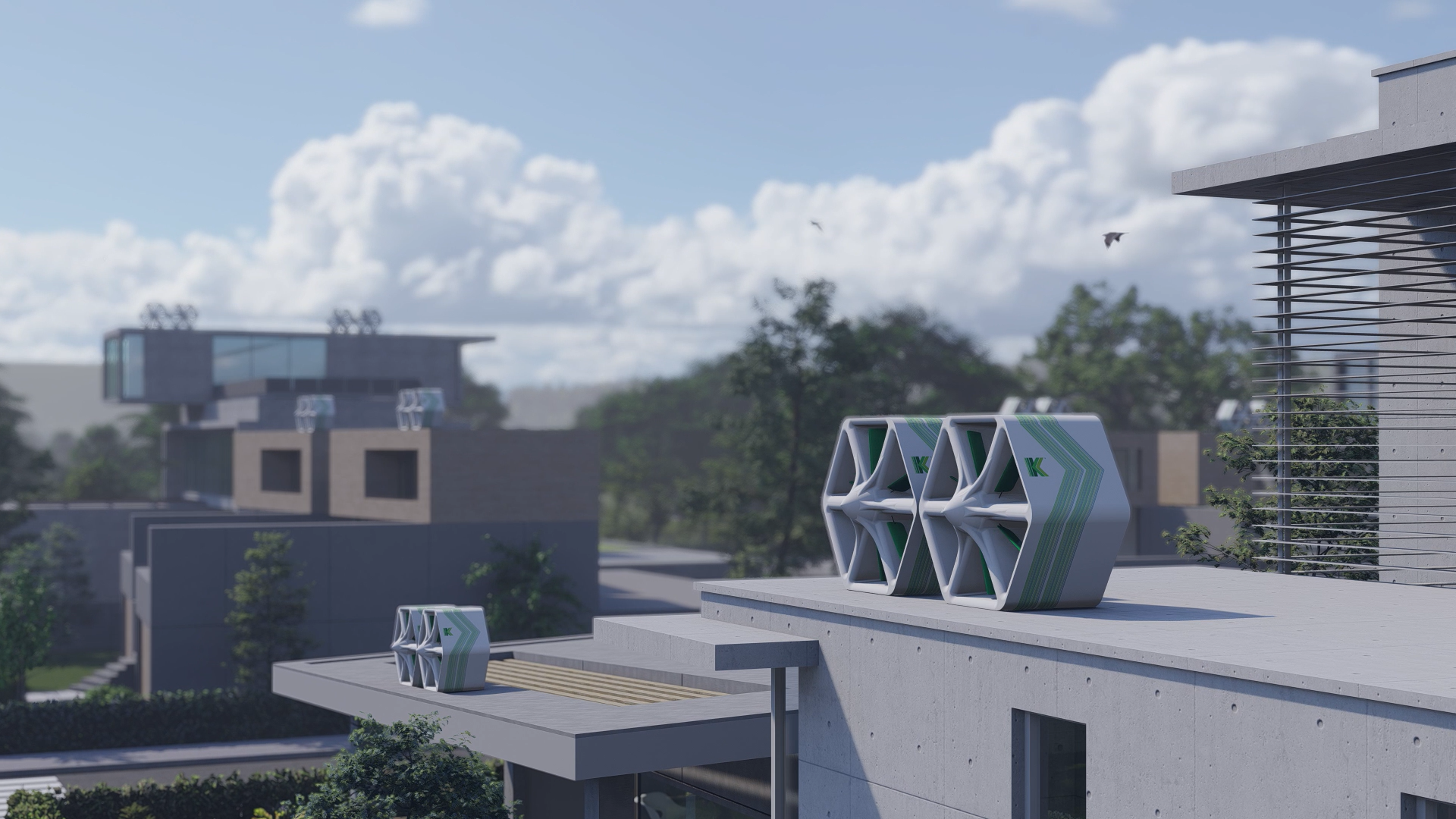Harnessing the ducting effect
How wind characteristics could be the key to maximising energy capture
Wind power is the biggest source of renewable energy in the UK, with 11,000 on and offshore turbines totalling 28 gigawatts (GW) of installed capacity. Traditionally wind power relies on rotary technology such as turbines, but with the International Energy Agency (IEA) asserting that innovation is crucial in achieving Net Zero, developments in wind power look to harness the physics of wind in new ways. Here, our Founder and CTO, Karthik Velayutham, explains how exploiting wind patterns using the ducting effect can help maximise energy production.
The UK currently has the sixth-largest installed capacity of wind power in the world. This is made up primarily of wind turbines — 14 GW onshore and 14 GW offshore. Wind has dominated the new total renewable installed capacity since 2019, making up 57 per cent up to 2023. There was a 3.1 per cent increase in generation from wind in the first quarter of 2023 alone, with increased capacity leading to higher generation despite UK wind speeds being lower than average this year.
At present, the UK uses wind turbines to harness wind energy. Though there are different variations available, they all use rotary motion to capture wind. Most wind turbines in use worldwide today are three-bladed horizontal-axis wind turbines (HAWT), consisting of a rotor shaft, an electrical generator, and a gearbox to convert the relatively low-speed rotation to higher speeds suitable for generating electricity. They vary in height but typically are around 60 to 120 metres tall.
The design and size of wind turbines mean that they must be installed in remote areas with large amounts of space. Rotary motions work most effectively at 10 metres or more above ground level, where the wind has more laminar characteristics and a more consistent flow. This means that they cannot capture low-level or ground winds effectively. Ground winds have an inconsistent flow and are characterised by instantaneous changes in wind speed and direction, meaning that they behave differently to laminar winds at higher levels and thus require different methods to capture.
The cut-in speed of many wind turbines is three to five metres per second (m/s). 90 per cent of the world experiences winds of less than four (m/s) throughout the year, meaning that turbines can generate energy effectively around 70 per cent of the time. However, standard wind turbines only have an estimated efficiency of around 30 to 45 per cent, dropping to 10 to 20 per cent when exposed to low wind speeds. They are also not as receptive to instant changes in speed and direction, for example, gust winds. This leaves large amounts of wind resource unexploited.
The IEA has stressed that innovation will be crucial to meet net-zero goals by 2050, and in the wind energy sector, there is ongoing research into new designs for power generation systems that improve on current performance. Ducted Wind Turbines (DWTs) and similar technologies present an option for capturing more wind in a wider range of locations. These turbines surround the rotor with a duct that captures more oncoming wind, directing it through the rotor to increase the amount of wind the rotor ‘sees’, and thus the amount of energy generated overall. In some existing projects, adding a duct to focus more wind onto the rotor has achieved an estimated 50 per cent increase in energy generation when compared to conventional turbines of the same rotor size.
The Energy Systems Research Unit from the Department of Mechanical Engineering at the University of Strathclyde has explored this concept further. Their research found that using this ‘ducting effect’ for urban wind energy conversion could offer an alternative to conventional approaches. Ducted turbines use pressure differentials created by wind flow around buildings. The results suggest that this ducting effect can achieve high power outputs and that ducted technology could potentially be retrofitted onto existing buildings in more built-up areas.
The Journal of Physics published research from the Renewable Energy Research Group and the Manipal Institute of Technology’s Department of Aeronautical and Automobile Engineering investigating the aerodynamic performance of DWTs in relation to ground effect winds. The results indicate that placing ducted systems close to the ground increases the flow rate through the turbine, improving aerodynamic performance. The research suggests that using ducts can exceed the previously estimated maximum output limit due to increased flow from the duct and additional force from the ground.
Informed by this research on the ducting effect and driven by the need to harness untapped wind resource, Glasgow-based greentech company Katrick Technologies has developed a new form of wind power technology that does not use rotary parts. Katrick Technologies’ Wind Panel instead uses the ducting effect and converts mechanical oscillations into clean energy. The principles of the ducting effect used to develop DWTs apply to the Wind Panel and have been instrumental in the development, patenting and validation of the technology.
The Wind Panel uses several channelling ducts containing aerofoils. These aerofoils convert the kinetic energy of wind to mechanical oscillations, which are then converted to energy. The ducts were designed in collaboration with the Manufacturing Technology Centre (MTC) to use the ducting effect for wind speed augmentation. This is intended to focus higher wind speeds onto the aerofoils and thus improve power generation.
The aerofoils operate independently from one another, in contrast to the rotary blades of a turbine. Energy is collected in smaller pockets, meaning that unlike traditional rotary technology, the Wind Panel can capture instantaneous changes in wind speed and direction. This makes the panels sensitive to gust winds and a much higher range of speeds and frequencies than turbines.
Thanks to the unique design and ability to capture a wider variety of winds, the panels can be fitted to existing structures, greenfield sites, and microgrids. They can be installed at ground level to capture ground-effect winds and benefit from the increased flow rate found in previous research. This addresses some of the key challenges associated with wind turbines. The Wind Panels provide a new solution for wind energy in locations where traditional turbines are not viable.
At present, the technology is undergoing testing to validate to Technology Readiness Level 6 (TRL6). The ducting effect was tested in the wind tunnel at the Silverstone Sports Engineering Hub as part of this process. The tunnel can replicate winds at a range of speeds to test the technology under conditions representative of real-life operational scenarios and wind patterns informed by Katrick Technologies’ wind mapping projects. The initial ducting effect design parameter aimed to achieve a 1.4 times acceleration of wind travelling through the duct between the inlet and the middle.
The Wind Panel duct was tested at a wind velocity of 4.3 m/s measured at the inlet. Wind speed was then measured at the midsection of the duct and at the outlet to examine the change in velocity as the wind moved through the duct. At the midsection, a velocity of 6.4 m/s was recorded, a 1.5 times acceleration, demonstrating that the ducting effect was working even at lower external wind speeds. This is a highly promising development for a novel technology and highlights the potential of ducting as a new addition to the wind power sector.
Conventional turbines are an essential part of the UK’s renewable landscape, but examining their limitations and exploiting the characteristics of wind is key to capturing untapped wind energy resources. By considering wind physics in its design, Katrick Technologies has demonstrated that its Wind Panel can address some of the challenges involved in turbines and offer a new, complementary way of generating green energy.




